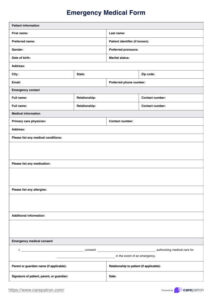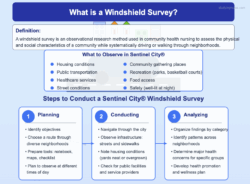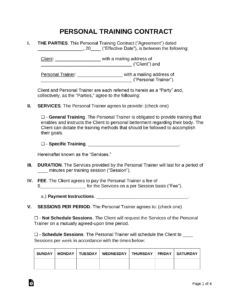Navigating the world of non emergency medical transportation, or NEMT, involves much more than just getting patients from point A to point B. It’s a vital service that ensures individuals can access critical medical appointments, treatments, and therapies when they can’t drive themselves or use public transport. For both the providers offering these crucial rides and the clients who rely on them, a clear understanding of expectations and responsibilities is absolutely key to a smooth and professional operation.
This is where a well-structured agreement comes into play. Without a solid framework, misunderstandings can easily arise, leading to potential disputes, financial headaches, or even compromising patient safety and quality of service. That’s why having a robust non emergency medical transportation contract template isn’t just good practice; it’s an essential tool for protecting all parties involved and ensuring that services are delivered consistently and reliably.
What Should Your NEMT Contract Template Include?
When you’re putting together a contract for non emergency medical transportation services, think of it less as a dry legal document and more as a detailed blueprint for how your operations will run. It outlines the responsibilities of everyone involved, the scope of services, and the crucial details that prevent confusion down the road. A comprehensive template will cover all your bases, ensuring professionalism and clarity in every interaction.
Every contract starts with the basics, but it’s the specific details that truly make it effective. From identifying who’s who to outlining exactly what kind of service is being provided, precision here can save a lot of trouble later. This section is where you establish the core framework for your service delivery.
Parties Involved and Scope of Services
First and foremost, your contract needs to clearly identify everyone participating in the agreement. This isn’t just about names; it’s about defining roles and responsibilities from the outset. Equally important is a detailed description of the services you’re offering, leaving no room for ambiguity about what’s included and what isn’t.
- Identification of Parties: Clearly state the full legal names, addresses, and contact information for both the NEMT provider (your company) and the client (individual patient, healthcare facility, insurance company, etc.).
- Detailed Service Description: Specify the types of transportation services provided. Does it include wheelchair transportation, stretcher services, bariatric transport, or just ambulatory rides? Are there specific types of appointments (dialysis, physical therapy, general check-ups) or destinations you primarily serve?
- Geographic Service Area: Define the operational boundaries. Will you only serve a specific city, county, or a broader regional area?
- Vehicle Types and Capabilities: Mention the types of vehicles used and any special equipment or capabilities (e.g., ADA-compliant vehicles, specific lift systems).
Payment Terms and Billing Procedures
Money matters are often the biggest source of disagreement if not handled correctly upfront. Your contract must lay out exactly how much services cost, when payment is due, and what happens if payments are late or services are cancelled. Clarity here is vital for maintaining a healthy business relationship and cash flow.
- Pricing Structure: Clearly state how charges are calculated. Is it a flat fee per trip, mileage-based, hourly, or a combination? Detail any additional charges for waiting time, extra stops, or specialized equipment.
- Payment Schedule: Specify when payments are due (e.g., at the time of service, weekly, monthly).
- Accepted Payment Methods: List all acceptable forms of payment (credit card, direct billing, insurance claims).
- Cancellation and No-Show Policy: Outline the fees and procedures for cancellations made within a certain timeframe or for no-shows, to cover your operational costs.
Responsibilities and Liabilities
This part of the contract defines who is responsible for what, and importantly, what happens in case of an accident, injury, or service failure. It protects both the provider and the client by setting clear boundaries and expectations regarding safety, insurance, and professional conduct.
- Provider’s Duties: This includes ensuring driver qualifications, vehicle maintenance, adherence to safety protocols, punctuality, and professionalism.
- Client’s Duties: What the client is responsible for, such as providing accurate medical information, being ready at the scheduled pick-up time, and informing the provider of any changes to their condition or appointment.
- Insurance Requirements: Detail the types of insurance coverage the NEMT provider maintains (e.g., commercial auto liability, general liability, workers’ compensation).
- Dispute Resolution: Outline a clear process for resolving disagreements, whether through mediation or arbitration, to avoid costly legal battles.
Term, Termination, and Amendments
A good contract isn’t just about starting a relationship; it’s also about understanding how it ends and how it can change over time. These clauses ensure that both parties know the duration of the agreement, under what conditions it can be ended, and how modifications can be made, providing flexibility and predictability.
- Contract Duration: Specify the start and end dates of the agreement. Is it a one-time service, a recurring agreement for a fixed period, or ongoing until terminated?
- Conditions for Termination: Clearly list the reasons for which either party can terminate the contract, such as breach of terms, non-payment, or mutual agreement.
- Notice Periods: Require a specific notice period for termination (e.g., 30 days) to allow for a smooth transition and prevent abrupt service disruptions.
- Amendment Process: Describe how changes or modifications can be made to the contract, usually requiring written consent from both parties.
Customizing Your Contract for Specific Needs
While a good template provides a fantastic starting point, it’s crucial to remember that it’s just that – a starting point. Every NEMT operation and every client situation is unique, so taking the time to customize your agreement isn’t just recommended, it’s essential. This personalization ensures that your contract accurately reflects the specific services you offer and the particular needs of your clientele, minimizing future misunderstandings.
Think about the different types of clients you serve. An agreement with a large hospital system might need different clauses regarding patient data privacy (HIPAA compliance) and billing procedures than one with an individual patient. Similarly, working with an insurance provider might involve specific reporting requirements or pre-authorization clauses. Tailoring your non emergency medical transportation contract template to these nuances demonstrates professionalism and foresight.
Beyond client-specific needs, regulatory compliance is a massive factor in NEMT. State and federal laws can dictate everything from driver certifications and vehicle inspections to how patient information is handled. Your contract should explicitly state adherence to all relevant regulations, protecting both your business and your patients. This makes a non emergency medical transportation contract template an invaluable tool for operational consistency and compliance.
Finally, even with the most meticulously crafted template and customization, consulting a legal professional is highly advisable. A lawyer specializing in transportation or healthcare law can review your document, identify any potential loopholes, and ensure it’s fully enforceable in your jurisdiction. Their expertise can provide an extra layer of security, giving you peace of mind that your business is well-protected and operating within legal boundaries.
Putting together a robust NEMT contract is a foundational step for any successful non emergency medical transportation service. It’s more than just a legal formality; it’s a clear communication tool that sets expectations, clarifies responsibilities, and provides a solid framework for delivering essential services. By carefully detailing every aspect of your operations, you ensure that both your business and your clients are protected and valued.
Taking the time to craft a comprehensive, clear, and customized agreement will save you countless headaches down the line. It fosters trust, minimizes disputes, and allows you to focus on what truly matters: providing safe, reliable, and compassionate transportation to those who need it most. Invest in a strong contract, and you invest in the long-term success and integrity of your NEMT business.



